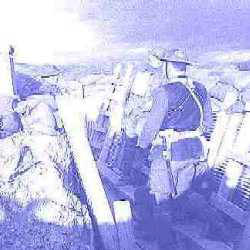 2> 2>
|
 Two members of General Pershing's staff would one day win the Nobel Peace Prize: George Marshall and Charles Dawes.
Two members of General Pershing's staff would one day win the Nobel Peace Prize: George Marshall and Charles Dawes.
 Dawes was also one of two future US Vice-Presidents who served in the AEF; the other was Harry Truman who also became President.
Dawes was also one of two future US Vice-Presidents who served in the AEF; the other was Harry Truman who also became President.
|
 New Yorker Magazine was created by alumni of the Doughboy newspaper THE STARS AND STRIPES including Harold Ross and Alexander Wolcott
New Yorker Magazine was created by alumni of the Doughboy newspaper THE STARS AND STRIPES including Harold Ross and Alexander Wolcott
 Readers Digest was founded by Sgt. Dewitt Wallace of the 35th Division who perfected his ability to summarize magazine articles as he was recovering from severe wounds he received in the Argonne Forest.
Readers Digest was founded by Sgt. Dewitt Wallace of the 35th Division who perfected his ability to summarize magazine articles as he was recovering from severe wounds he received in the Argonne Forest.
 History's first battle that started on D-Day at H-Hour was the Battle of St. Mihiel which began on September 12, 1918 at 0500 Hours.
History's first battle that started on D-Day at H-Hour was the Battle of St. Mihiel which began on September 12, 1918 at 0500 Hours.
|
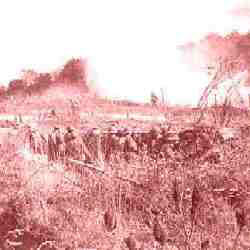
|
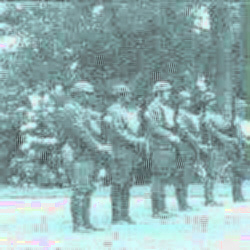
|
 In the post-Armistice lull, several members of the 114th Artillery Rgt. of the 30th Division decided that the Kaiser, who was in exile in Holland, needed to be arrested and brought to justice. Acting without any authorization and led by one of their members who was a former US Senator, they succeeded only in contributing a comic-opera episode to the Doughboy legend.
In the post-Armistice lull, several members of the 114th Artillery Rgt. of the 30th Division decided that the Kaiser, who was in exile in Holland, needed to be arrested and brought to justice. Acting without any authorization and led by one of their members who was a former US Senator, they succeeded only in contributing a comic-opera episode to the Doughboy legend.
|
 The Services of Supply imported 1,500 railroad locomotives and 18,000 freight cars in sections, reassembled them in France and operated them in support of the AEF on 1,538 miles of standard and narrow-guage track built by the Corps of Engineers.
The Services of Supply imported 1,500 railroad locomotives and 18,000 freight cars in sections, reassembled them in France and operated them in support of the AEF on 1,538 miles of standard and narrow-guage track built by the Corps of Engineers.
 During service in Europe 829 trained pigeons flew 10,995 missions with American Naval Aviators; they accomplished 219 successful communications missions. Eleven were declared missing in action.
During service in Europe 829 trained pigeons flew 10,995 missions with American Naval Aviators; they accomplished 219 successful communications missions. Eleven were declared missing in action.
|
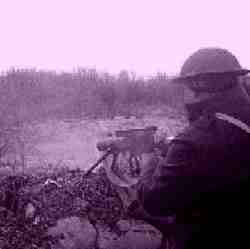
|
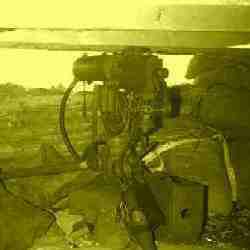
|
There is considerable confusion over the first fatalities of the AEF:
 The first individuals killed by the enemy were Lt. W.T. Fitzsimmons, Pvt. Oscar Tugo, Pvt. Rudolph Rubino and Pvt. Leslie Woods. They were killed in an air raid when bombs fell on Base Hospital No. 5 near Dannes-Camiers, September 4, 1917.
The first individuals killed by the enemy were Lt. W.T. Fitzsimmons, Pvt. Oscar Tugo, Pvt. Rudolph Rubino and Pvt. Leslie Woods. They were killed in an air raid when bombs fell on Base Hospital No. 5 near Dannes-Camiers, September 4, 1917.
 The first men killed in action were Corporal James Gresham, Pvt. Thomas Enright and Pvt. Merle Hay all of the 1st Division. They were killed in a trench raid near Bathelemont, November 2, 1917
The first men killed in action were Corporal James Gresham, Pvt. Thomas Enright and Pvt. Merle Hay all of the 1st Division. They were killed in a trench raid near Bathelemont, November 2, 1917
 The first member of the U.S. Air Service to lose his life on a combat mission was Capt. Phelps Collins of the 103rd Aero Squadron on a combat patrol on March 12, 1918. The first member of the U.S. Air Service to lose his life on a combat mission was Capt. Phelps Collins of the 103rd Aero Squadron on a combat patrol on March 12, 1918.
|
 Over the Italian Front a leaflet was dropped to encourage the Italian troops stating: "Every minute eight American soldiers disembark in Europe." In the peak month of shipping Doughboys over, July 1918, this was precisely true.
Over the Italian Front a leaflet was dropped to encourage the Italian troops stating: "Every minute eight American soldiers disembark in Europe." In the peak month of shipping Doughboys over, July 1918, this was precisely true.
 Alvin York received his Medal of Honor for actions in an effort to relief the famous Lost Battalion. That operation was planned in-part by Major Jonathan Wainwright, who would command the Philippines after MacArthur departed.
Alvin York received his Medal of Honor for actions in an effort to relief the famous Lost Battalion. That operation was planned in-part by Major Jonathan Wainwright, who would command the Philippines after MacArthur departed.
 The American Air Service gave us the expression to "conk-out", "conk" being the last sound of a disengaging aircraft engine.
The American Air Service gave us the expression to "conk-out", "conk" being the last sound of a disengaging aircraft engine.
|
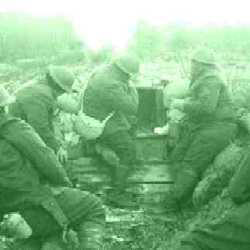
|
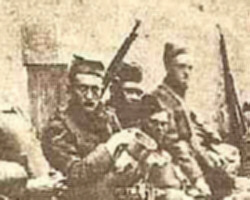
|
The AEF had a demographic pattern unique to any army in history.
 37% were unable to read and write.
37% were unable to read and write.
 Only 21% of the drafted enlisted men had some education beyond grammar school..
Only 21% of the drafted enlisted men had some education beyond grammar school..
 10% were Black Americans.
10% were Black Americans.
 52% were country boys.
52% were country boys.
 39% were first or second generation immigrants to America.
39% were first or second generation immigrants to America.
|
The American Tank Corps used the tanks of the Allies in combat.
 In the St. Mihiel and Meuse-Argonne operations the French Renault FT17 was used. It weighed 7.3 tons, traveled at a top speed of six miles per hour ad was armed with either a 37mm cannon or a Hotchkiss machine gun.
In the St. Mihiel and Meuse-Argonne operations the French Renault FT17 was used. It weighed 7.3 tons, traveled at a top speed of six miles per hour ad was armed with either a 37mm cannon or a Hotchkiss machine gun.
 Lt. Colonel George Patton personally took command of the first American Tank attack during the St. Milhiel Offensive.
Lt. Colonel George Patton personally took command of the first American Tank attack during the St. Milhiel Offensive.
 In the British St. Quentin sector, American drove the much larger Mark V tank. It weighed 30 tons, moved at 3.5 miles per hour and was armed with 2 57mm cannons, 6 machine guns or a mixture of weapons.
In the British St. Quentin sector, American drove the much larger Mark V tank. It weighed 30 tons, moved at 3.5 miles per hour and was armed with 2 57mm cannons, 6 machine guns or a mixture of weapons.
|
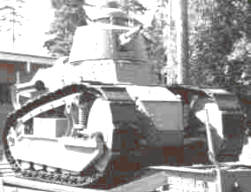
|
 2>
2>







